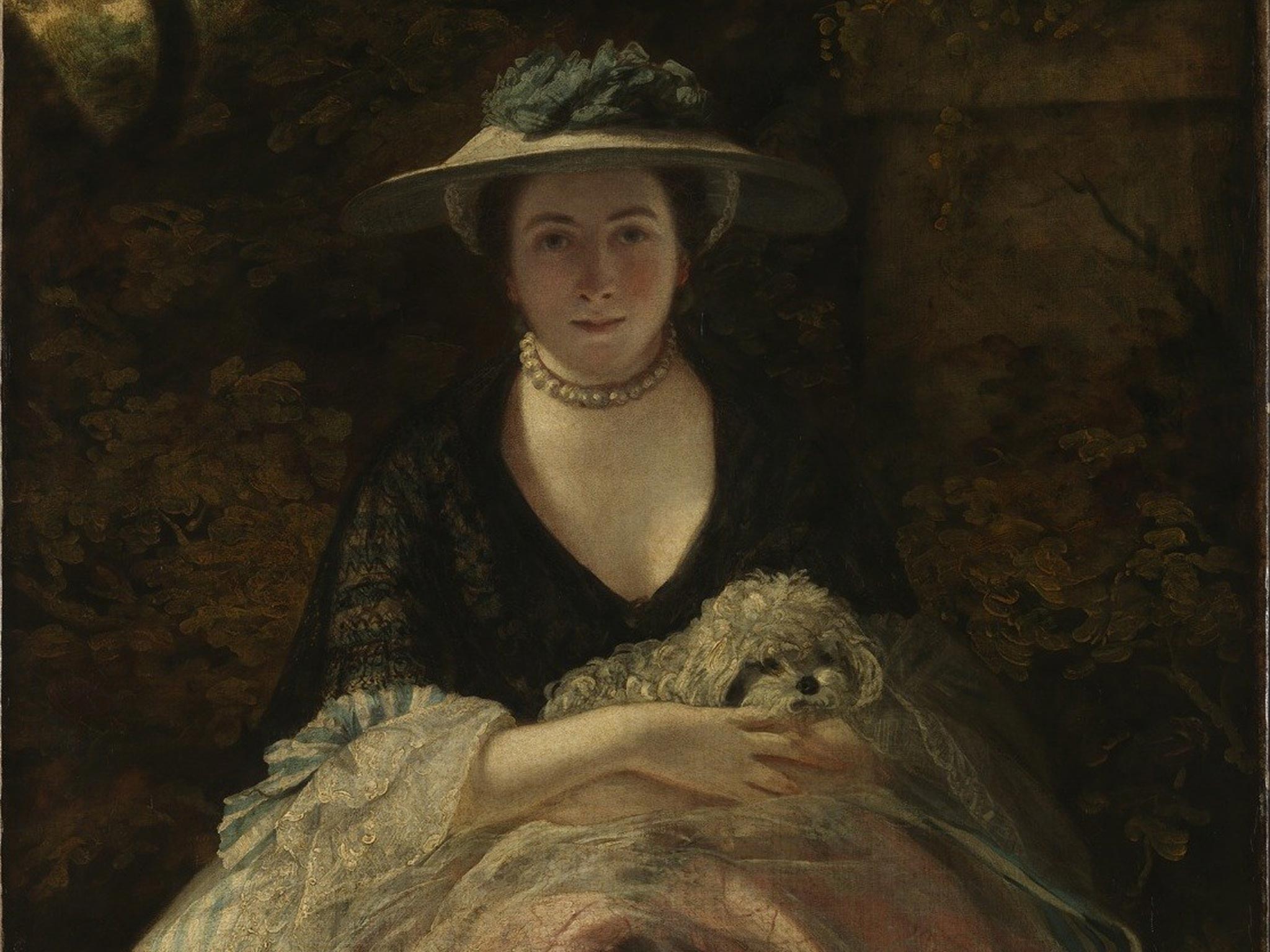Joshua Reynolds: Experiments in Paint exhibition shows the English portraitist was a great innovator
Against shifting societal backdrop, Reynolds experimented wholeheartedly

The paintings of Joshua Reynolds stand head and shoulders above those of most of his 18th-century contemporaries and successors – literally, in the case of his large-scale portraiture.
But like his pictures, his reputation occasionally crumbles, for his gambles with new techniques did not always pay off. Notably, his inclusion of volatile, gluey bitumen, and his early habit of combining colours in an act of mutually assured destruction meant that some canvases deteriorated quickly.
Indeed, one disgruntled subject, Sir Walter Blackett, seeing his portrait disintegrate before his very eyes, penned a sceptical rhyme: “Painting of old was surely well designed/To keep the features of the dead in mind/ But this great rascal has reversed the plan/And made the pictures die before the man.”
Luckily, the artist lived long enough to learn from his mistakes, says Mark Hallett, an authority on Reynolds and co-curator at the Wallace Collection in London of a new exhibition that brings the painter’s experimentalism into focus. By the 1780s he had stopped, for example, mixing red lake with white for a rosy complexion, because the colour soon drained from his subjects’ faces, leaving a ghostly pallor.
The Wallace Collection has not only attracted loans from all over the world for the show, but also reviewed its own holding of 12 Reynolds paintings, cleaning five to remove centuries of grime and deadened varnish. That project, in common with all such renovations, was shot through with the restorer’s dilemma: how far do you go? Displays of X-ray photographs illustrate the complexity of Reynolds’s layering: application upon application of pigment and glaze. That he could, for all the overpainting, suggest a wisp of gossamer, is his alchemist’s art.
In the late 18th century, experimentation and entrepreneurship was in the air. Economic structures were being challenged and the old social order was changing, the aristocracy unseated by a confident new breed of self-made men. The business people and questing scientists of the time drew no lines between wealth creation, art patronage and intellectual enquiry.
Reynolds’s contemporary, Josiah Wedgwood, was as interested in forging a network of canals as in formulating the perfect white glaze for his china: he was a member of the Birmingham-based Lunar Society, a group of innovators whose members’ portraits were painted by Joseph Wright of Derby, perhaps best known for his thrilling, nocturnal 1768 work Experiment on a Bird in the Air Pump, with its excited investigators and anxious onlookers.
Against this shifting societal backdrop, Reynolds experimented wholeheartedly – not only querying established combinations of pigments, but also testing out different categories of painting, taking poses and posture to new extremes and executing a series of portraits of the same subject in different manners.
He painted courtesans and heiresses with equal care, and had the resulting portraits hung side by side at prestigious exhibitions. The only distinction he made was between those portraits that were destined to show at the Royal Academy, which he helped found in 1768, and those that were for personal consumption. Elements of the latter commissions would be done by assistants, with Reynolds providing finishing touches. The result was, nonetheless, a Reynolds.
The surprise, perhaps, was that women of pedigree not only tolerated their portraits to be hung alongside those of courtesans but positively welcomed the narrative colour that such association gave them. To be painted by Reynolds was itself an event, and his sitters readily adopted the more active poses that he suggested, in contrast to the expressionless “Kneller mask” – the frozen visage that was the speciality of Sir Godfrey Kneller, who had dominated English portrait painting earlier in the century. Rather, Reynolds gave them a three-dimensionality that might be lacking in their limited daily lives.
He was experimenting too, with light and shade, but not merely casting light on his focal points and plunging secondary features into shadow: in the Wallace’s own Nelly O’Brien (1762-63), the sitter’s features are shaded by the broad brim of her hat while the light falls on her décolletage. And yet the viewer’s eye is still drawn up to the slightly obscured features, peering in to see better. Reynolds knew about such scrutiny: in another radical departure, he discarded the conventions of self-portraiture and in the late 1740s depicted himself shading his gaze with his left hand, casting a shadow like an eye-mask across his face. That Reynolds was only in his early twenties when he created this National Gallery treasure, on loan to the Wallace, speaks volumes about an artist who, from the start, was searching for difference.
A theatrical showman within his own studio, Reynolds devised a drama in which sitters, patrons and onlookers alike were keen to play their parts, in particular in his so-called “fancy pictures” – that is, sentimental but skillful vignettes such as the Tate’s The Age of Innocence (c1785), with its tenderly posed little girl.
Nevertheless, like a persuasive actor who becomes diffident when compelled to be themselves, in the drawing rooms of others, his company was considered unremarkable, says Hallett. An underlying seriousness was manifest in his trip around Europe in young adulthood, when he was critical of other young noblemen on the educative Grand Tour who squandered their opportunities and chose sex, drink and gambling over the Great Masters. For all his aptitude and application, when it came to painting, Reynolds had a gambling streak of his own which would make him one of his generation’s most outstanding, and appealing, chancers.
‘Joshua Reynolds: Experiments in Paint’, Thur to 7 June (wallacecollection.org), admission free
Subscribe to Independent Premium to bookmark this article
Want to bookmark your favourite articles and stories to read or reference later? Start your Independent Premium subscription today.

Join our commenting forum
Join thought-provoking conversations, follow other Independent readers and see their replies